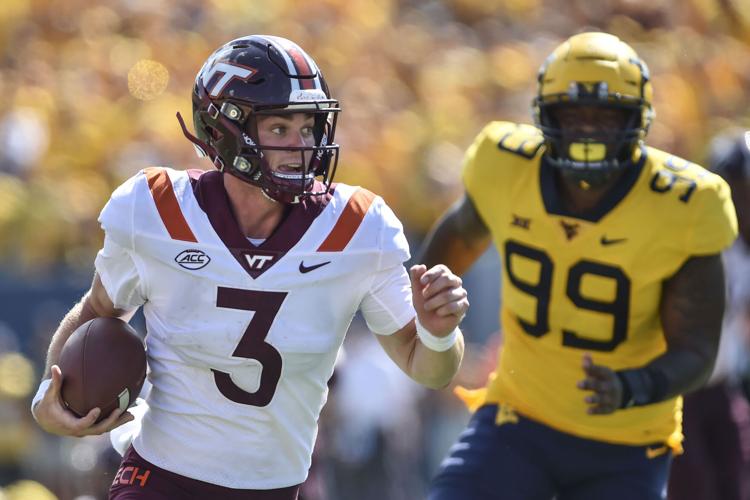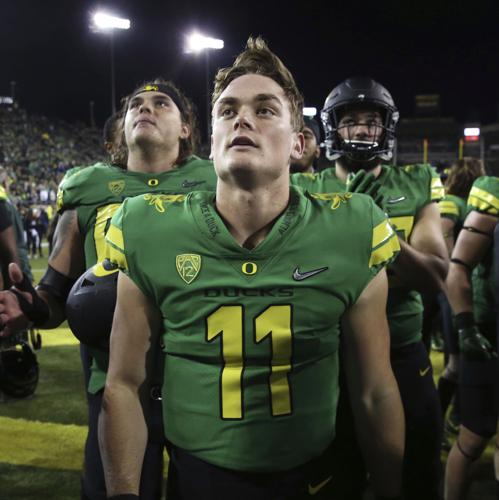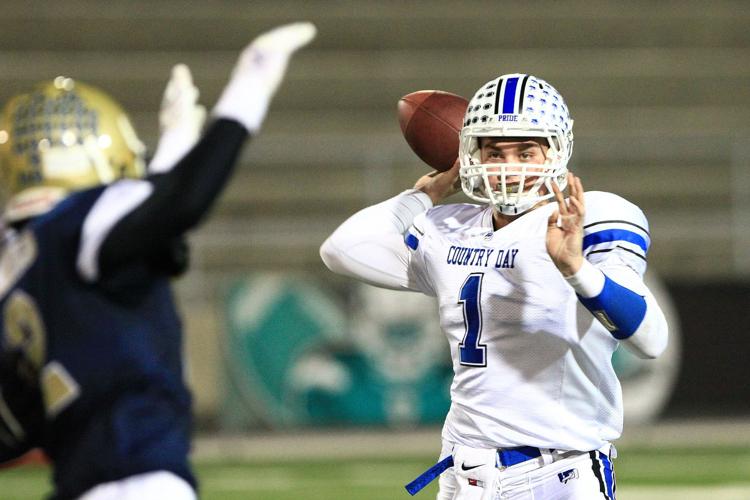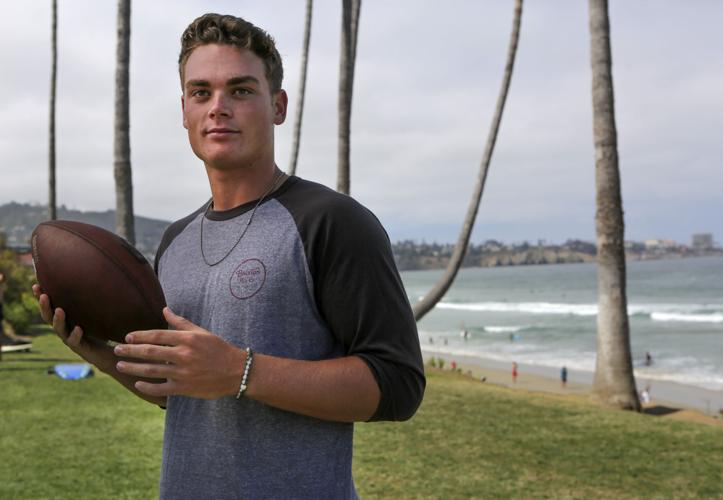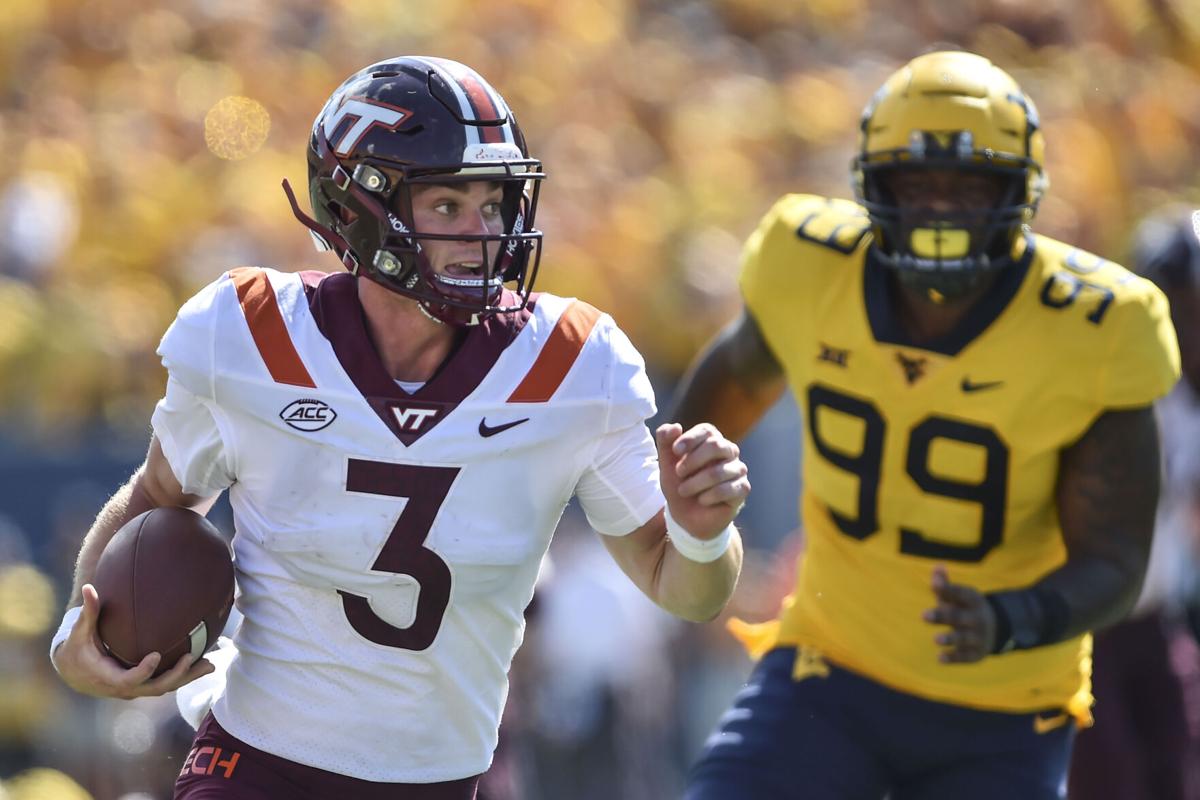Unwritten rules for a college football quarterback begin with side-stepping as much contact as possible. Bee-lining linebacker? Hit the grass. Untouched, blitzing safety? Race to the sideline.
Rule No. 2? Refer to Rule No. 1.
Staying upright with limbs attached and bones in factory showroom condition keeps offensive triggermen on the field. So, why does San Diego State transfer Braxton Burmeister continually run toward trouble?
“Whenever football’s done, my goal is to fight in the UFC,” Burmeister, a senior who played at La Jolla Country Day, offered as a bit of a glimpse into his unique wiring. “I’ve been training and doing MMA since I was really little. My mom (Angela) got me into it. She’s been doing kickboxing since I was in third or fourth grade.
“I used to go watch, then I started doing it.”

Braxton Burmeister played with a shoulder injury while at Oregon.
As other quarterbacks hunt escape routes away from contact, Burmeister is drafting a long-term plan to experience as much as possible. Absorbing blows and getting back up has become a bit of a specialty for him.
Burmeister is the hometown kid who took the long, long, long road home. He verbally committed to Arizona (twice) and started at Oregon, transferring to Virginia Tech after coach Willie Taggart left for Florida State and new head coach Mario Cristobal embraced an offense catering to pocket passers.
When coach Justin Fuente found the ax in Blacksburg, Virginia, player defections followed.
“It was really a complete rebuild,” Burmeister said. “For my last year, I wanted the opportunity to win. With new coaches and a completely different team it felt like a new program, almost.”
The 6-1, 205-pound senior found himself on the move again.
Though he said Missouri, Cal and “some ACC schools” became options, Burmeister felt he had been away from home long enough. There was little need to convince the Aztecs of his adaptability or toughness. He proved that on two Power 5 campuses.
Burmeister started in his first game at Oregon as a true freshman after current NFL QB Justin Herbert of the Chargers and a backup were injured. In the first half of his first start, he was injured, too.
“We were playing Washington State,” Burmeister said. “I took a hit on the sideline and my arm started to go numb. I didn’t know (if it was serious), because once you’re in the game there’s so much adrenaline. It wasn’t until halftime that I started to feel.
“Obviously, AC sprains at quarterback aren’t good.”
An AC sprain affects the area when the shoulder blade and collar bone connect. The joint impacts shoulder control, motion and strength. Burmeister struggled to lift his arm above his head. Throwing the ball downfield tested pain thresholds.
And Burmeister suffered in relative silence.
“When he was at Oregon, I’m still a little frustrated about that,” said former Oregon star Akili Smith, who has worked with Burmeister since he was in seventh grade. “The (sprain) wasn’t disclosed. The fans started to throw him under the bus because they didn’t know the truth.
“People were always asking why they weren’t pushing the ball down the field. It was all intermediate stuff, bubble screens, boundary throws, throwing the ball in the flats. There was a reason. He was hurt.
“To me, it showed his grit and toughness to go out and play through that.”
The situation gauged Burmeister’s mental resolve.
“That was tough, especially being an 18-year-old, a true freshman starting in the Pac-12,” he said. “It became a big learning experience for me to block out the noise and not worry about any of that extra stuff. People didn’t know, but I understood that we didn’t want opposing defenses to know about it.
“So, I did what I could do.”

A star at San Diego’s La Jolla Country Day, Braxton Burmeister backed out of his commitment to Arizona, then recommitted, only to choose Oregon in the end.
A major reason Burmeister continued to play, in addition to the injuries in front of him, was because of his elite speed. His legs gave the Ducks the best chance to win, even with a bum wing.
That running ability offers a potential game-changer for the Aztecs.
“I don’t think San Diego State has ever had a runner like that (at quarterback),” Smith said. “What he can do out in space is very dynamic. He might be one of the fastest players on the team. There’s no question about it. He’s dual threat, all day.”
Any doubt about his wheels was erased at Virginia Tech, where they used GPS tracking technology to measure speed in offseason workouts. The fastest player on the team was not a kick returner, wide receiver, defensive back or running back.
It was Burmeister, whose top speed registered 22.53 mph.
The top speed in the NFL during 2021, according to Next Gen Stats, was a Week 15 burst by the Colts’ Jonathan Taylor, who reached 22.13 mph. Though that was measured in-game, in pads, the comparison remains impressive.
“I’ve only been around one other player who’s truly elite-ly fast like that,” said Jeff Hecklinski, offensive coordinator and quarterbacks coach of the Aztecs. “And that was (former NFL player) Denard Robinson when we were (coaching) at Michigan.
“When he decides to go, he can go from zero to 60 in a split second. There’s no build up to that speed, so they break angles (of tacklers).”
Burmeister leaned on that singular acceleration for a late touchdown run a season ago that gave Virginia Tech a late lead in a near upset of eventual Fiesta Bowl entrant Notre Dame.

Braxton Burmeister is back in his hometown and quarterbacking the Aztecs.
Though players are not timed in the same way at San Diego State, Hecklinski and others think Burmeister is in the conversation for the fastest Aztec, along with running back Jordan Byrd, USC transfer Kenan Christon and perhaps a few others.
“I don’t necessarily know how fast he is, as far as ‘timed’ fast,” Hecklinski said. “I know he’s fast.”
The combination of speed and fearlessness running the ball began in high school, where he started as a true freshman at Country Day.
Coach Tyler Hales said Burmeister missed three plays, other than being pulled in blowouts, in his four seasons that covered 50-plus games. He missed one practice because trainers made him sit.
“Our first game his senior year, he caught a helmet on the elbow and couldn’t move his arm,” Hales said. “Brax went right back in and played through it. I don’t think he slid or ran out of bounds one time in those four years, either.”
Not literally, right?
“He literally never did,” Hales said. “That’s 100 percent fact. There wasn’t a sideline he found on his own. You had to tackle him for him to go down. When I saw him slide once when he was at Oregon, I yelled at my wife. I couldn’t believe it.”
Measuring Burmeister’s grit became a thing at each stop.
During a drill at Virginia Tech, a 6-9, 350-pound lineman stepped back on Burmeister’s left foot, breaking four toes.
“He’s a big boy. It didn’t feel good,” Burmeister said. “I practiced the next day. It was more the doctors who wouldn’t let me play in the games. But I was practicing. I was trying to show the coaches I was fine.”
Shake it off. Move on.
In the Notre Dame game, Burmeister said he experienced the hardest hit of his quarterbacking life. Safety Kyle Hamilton, a current member of the NFL’s Baltimore Ravens, came free up the middle on a third-down play.
“I saw a little bit of stars,” said Burmeister, before adding his most telling memory of the jarring moment. “Luckily, I got the ball out and got the completion. We got the first down.”
In his mind, bruises build armor.
Burmeister trains with former MAA fighter Shannon Gugerty at Rise Above Jiu-Jitsu in San Diego. Hecklinski, asked if he knew about his quarterback’s post-football goal, smiled.
“No surprise at all,” he said. “Whatever he chooses to do, he’s going to be highly successful. Don’t be shocked if, three or four years from now, he’s competing in MMA title fights.”
He’s still got some football fights first.


